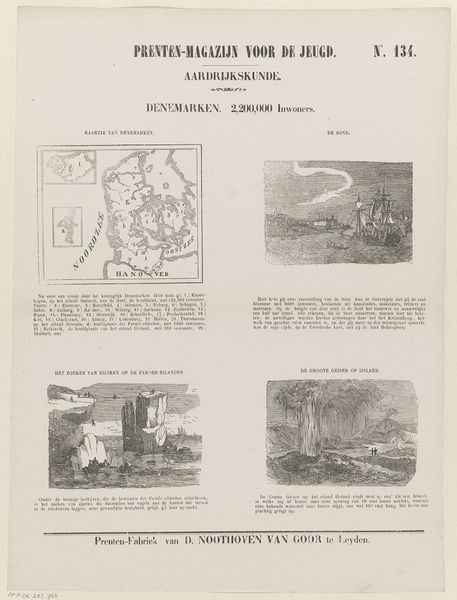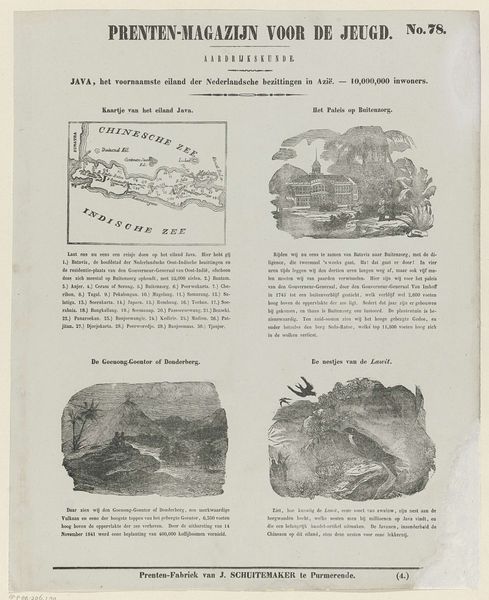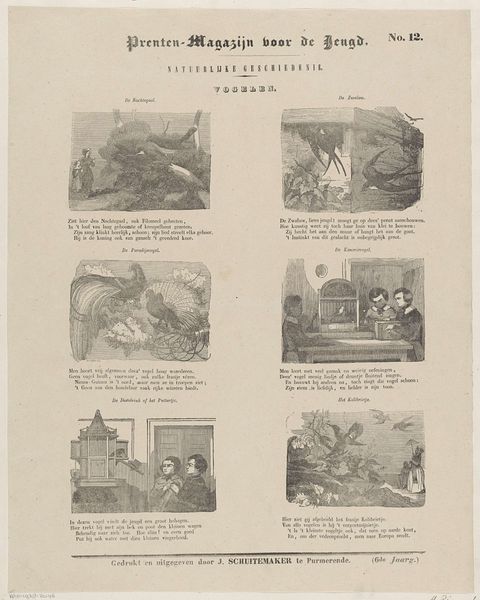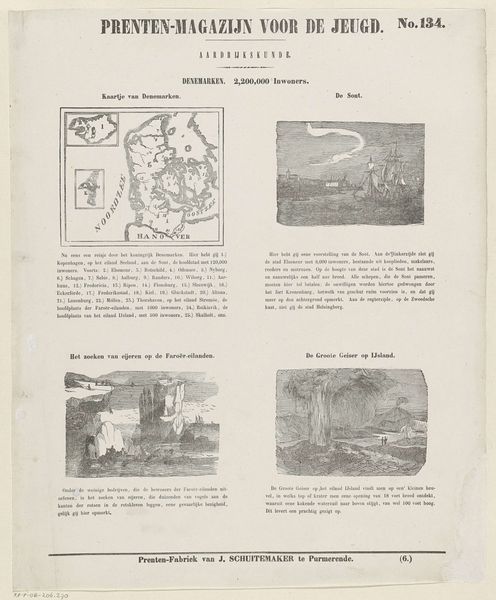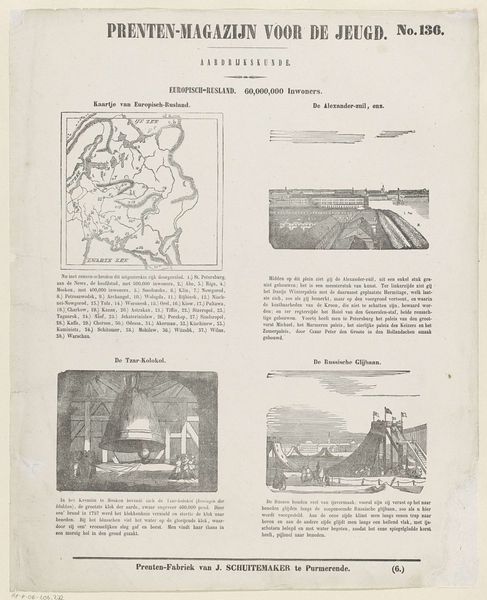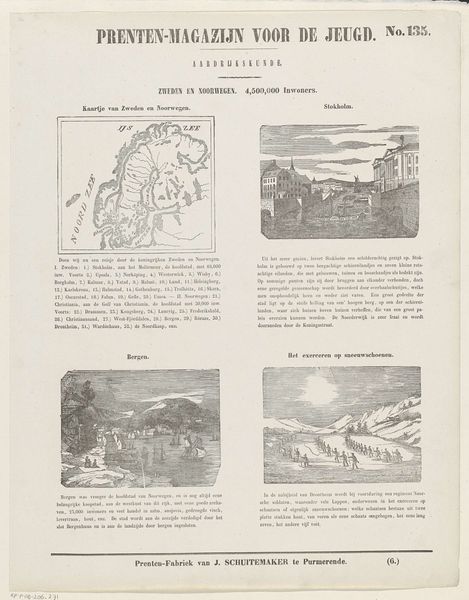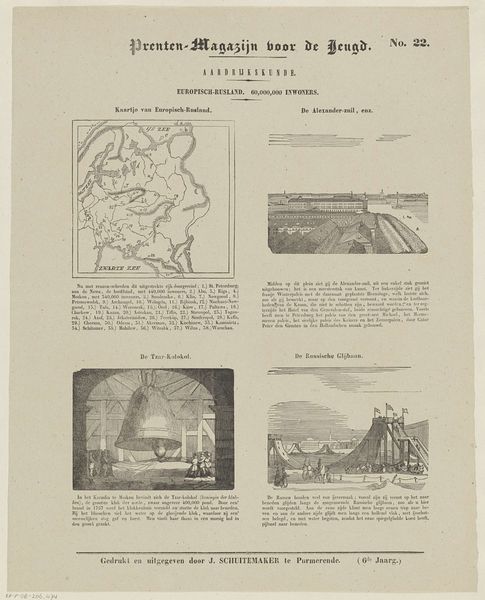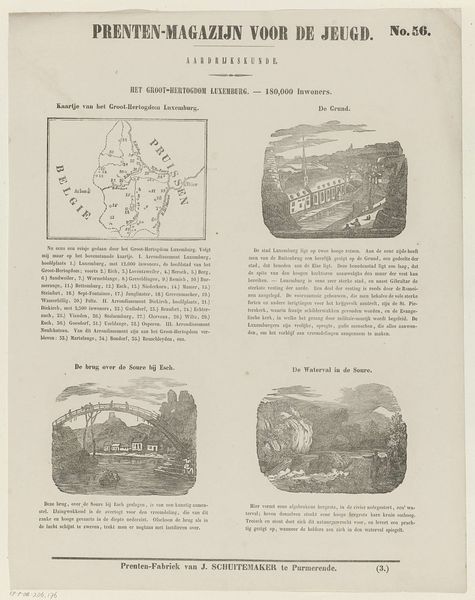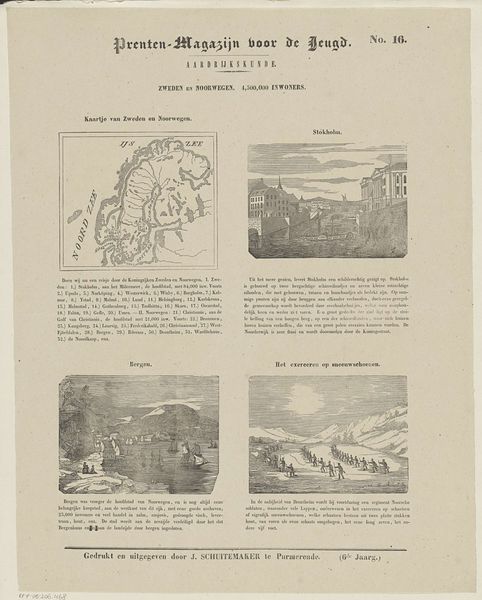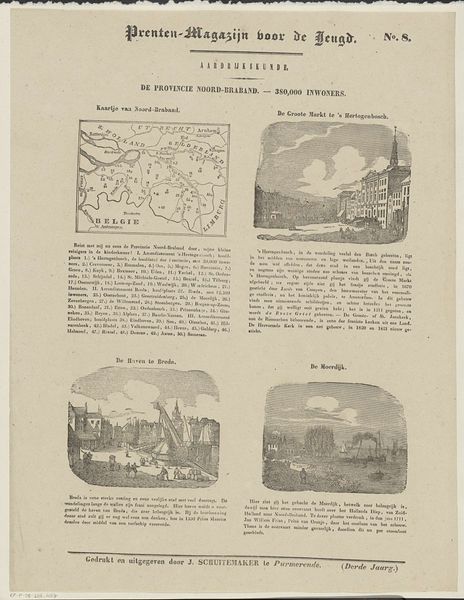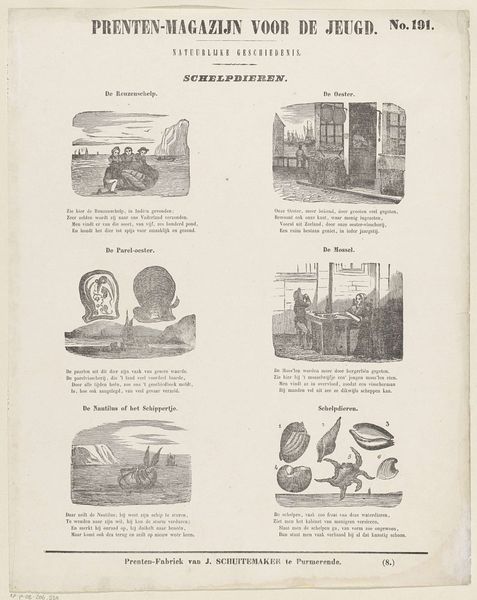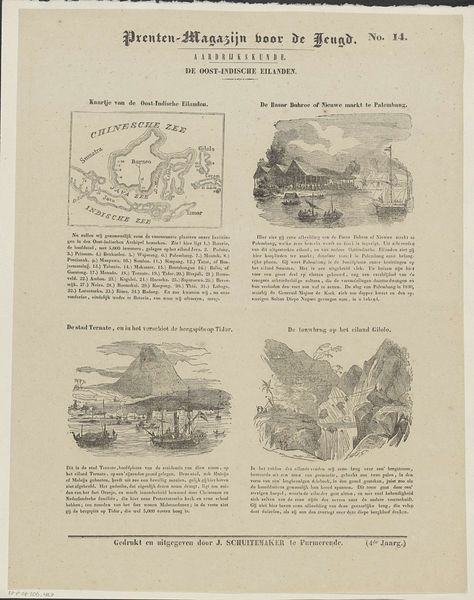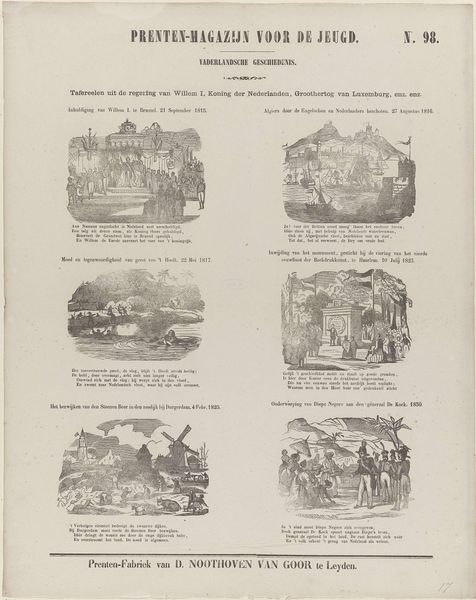
graphic-art, print, engraving
#
graphic-art
# print
#
old engraving style
#
history-painting
#
engraving
Dimensions: height 416 mm, width 312 mm
Copyright: Rijks Museum: Open Domain
Editor: This is “Europisch-Rusland. 60,000,000 inwoners,” which translates to European Russia. 60,000,000 Inhabitants. It's an engraving dating from 1850 to 1881, created by Dirk Noothoven van Goor. It looks like a page from an educational magazine. What can you tell me about this piece, given the context in which it was produced? Curator: This image provides an interesting insight into how Russia was presented and perceived in Western Europe during the 19th century. The very title emphasizes both the geographical region and the size of its population. Why do you think the artist emphasized that information? Editor: Maybe it’s a way of illustrating Russia’s power at the time? Sixty million inhabitants was probably quite a lot back then. Curator: Precisely! The focus on population size is linked to the power dynamics and geopolitical considerations of the time. Consider that this was produced during a period of increasing global interactions, where accurate and accessible information about different parts of the world was becoming increasingly valued, not just for trade, but also for understanding the changing balance of power. What else do you see represented in the prints? Editor: There’s a map of European Russia, plus engravings of buildings and scenes, including one of what looks like a very large bell! Curator: The inclusion of the Alexander Column and the Tsar-Kolokol bell presents Russia through its monuments and architectural feats. Think of these choices as actively constructing a visual narrative around Russia's identity. What impression would these images have left on its intended audience? Editor: It definitely paints a picture of Russia as this grand, established empire. I didn't consider how much the choice of images plays a role in constructing that image. Curator: Exactly, it makes you think about what details are highlighted and what’s deliberately left out, doesn’t it? These were tools used to influence and shape opinions. Editor: Definitely food for thought! I'll remember to think about what message the artist may have intended for the viewer when evaluating art.
Comments
No comments
Be the first to comment and join the conversation on the ultimate creative platform.

